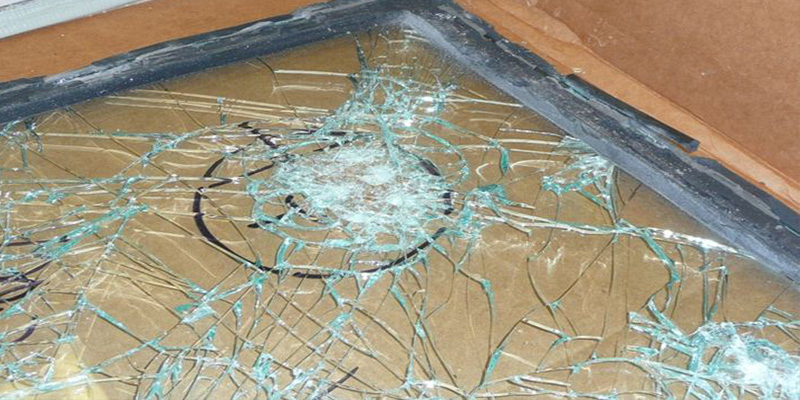Downloads
DOI:
https://doi.org/10.7480/jfde.2014.3-4.906Keywords:
Structural silicone, high windloads, silicone fatigue testing, high design strength, finite element analysis, hurricane testingAbstract
This paper presents an advanced engineering evaluation, using nonlinear analysis of hyper elastic material that provides significant improvement to structural silicone glazing (SSG) design in high performance curtain wall systems. Very high cladding wind pressures required in hurricane zones often result in bulky SSG profile dimensions. Architectural desire for aesthetically slender curtain wall framing sight-lines in combination with a desire to reduce aluminium usage led to optimization of silicone material geometry for better stress distribution.
To accomplish accurate simulation of predicted behaviour under structural load, robust stress-strain curves of the silicone material are essential. The silicone manufacturer provided physical property testing via a specialized laboratory protocol. A series of rigorous curve fit techniques were then made to closely model test data in the finite element computer analysis that accounts for nonlinear strain of hyper elastic silicone.
Comparison of this advanced design technique to traditional SSG design highlights differences in stress distribution contours in the silicone material. Simplified structural engineering per the traditional SSG design method does not provide accurate forecasting of material and stress optimization as shown in the advanced design.
Full-scale specimens subject to structural load testing were performed to verify the design capacity, not only for high wind pressure values, but also for debris impact per ASTM E1886 and ASTM E1996. Also, construction of the test specimens allowed development of SSG installation techniques necessitated by the unique geometry of the silicone profile. Finally, correlation of physical test results with theoretical simulations is made, so evaluation of design confidence is possible. This design technique will introduce significant engineering advancement to the curtain wall industry.
How to Cite
Published
Issue
Section
License
Copyright (c) 2015 Charles D. Clift, Lawrence D. Carbary, Peter Hutley, Jon Kimberlain

This work is licensed under a Creative Commons Attribution 4.0 International License.
Authors or their institutions retain copyright to their publications without restrictions.
References
Broker, K. A., Fisher, S., Memari, A. M. (2012). Seismic Racking Test Evaluation of Silicone Used in a Four-Sided Structural Sealant Glazed Curtain Wall System, Journal of ASTM International, 9(3), Paper ID JAI104144. Available online at www.astm.org
Carbary, L. D. (2007). A Review of the Durability and of Performance Silicone Structural Glazing Systems, Conference proceedings of Glass Performance Days 2007, http://www.glassfiles.com/library/article.php?id=1083&search=carbary&page=1 (viewed April 23, 2012).
Hagl, A. (2008). Durability by Design: New Results on Load Carrying Silicone Bonding. Third Symposium on Durability of Building and Construction Sealants and Adhesives, Denver CO, June 25-26, Journal of ASTM International, 9(2), Paper ID JAI101956. Available online at www.astm.org
Haugsby, M. H., Schoenherr, W. J., Carbary L. D., & Schmidt, C. M. (1989). In: C. J. Parise (Ed.), Methods for Calculating Structural Silicone Joint Dimensions, Science and Technology of Glazing Systems, ASTM STP1054 (pp. 46-57). Philadelphia, PA: American Society for Testing and Materials.
Hilliard, J. R., Parise, C. J., and Peterson, C. O. Jr. (1977). Structural Sealant Glazing, Sealant Technology in Glazing Systems, ASTM STP 638 (pp. 67-99). West Conshohocken, PA: ASTM International.
Travis, H. S. and Carbary, L. D. (1998). Finite Element Analysis of a Structural Silicone Shear Bead used in Skylight Applications. In: Jerome M. Klosowski (Ed.), Science and Technology of Building Seals, Sealants, Glazing and Waterproofing: Seventh Volume, ASTM STP 1334. Philadelphia, PA: American Society of Testing and Materials.
Yarosh, K. F., Wolf, A. T., Sitte, S. (2008). Evaluation of Silicone Sealants at High Movement Rates Relevant to Bomb Mitigating Window and Curtainwall Design, Journal of ASTM International, 6(2), Paper ID JAI101953, Available online at www.astm.org
Zhargamee, M. S., Schwartz, T. A., and Gladstone, M. (1996). Seismic Behavior of Structural Silicone Glazing. Science and Technology of Building Seals, Sealants, Glazing, and Waterproofing, Sixth Volume, ASTM STP 1286, ASTM, pp. 46-59.
